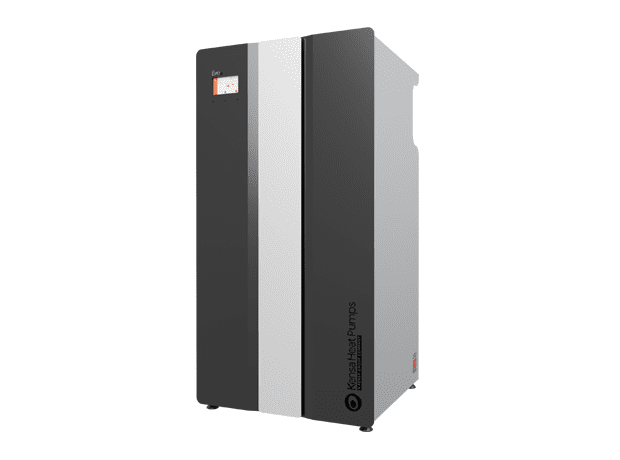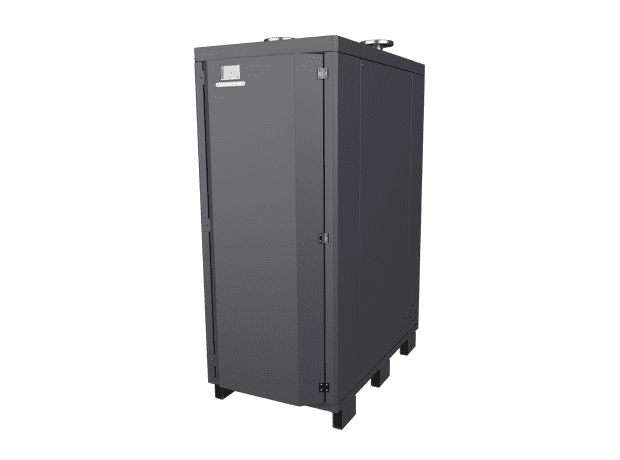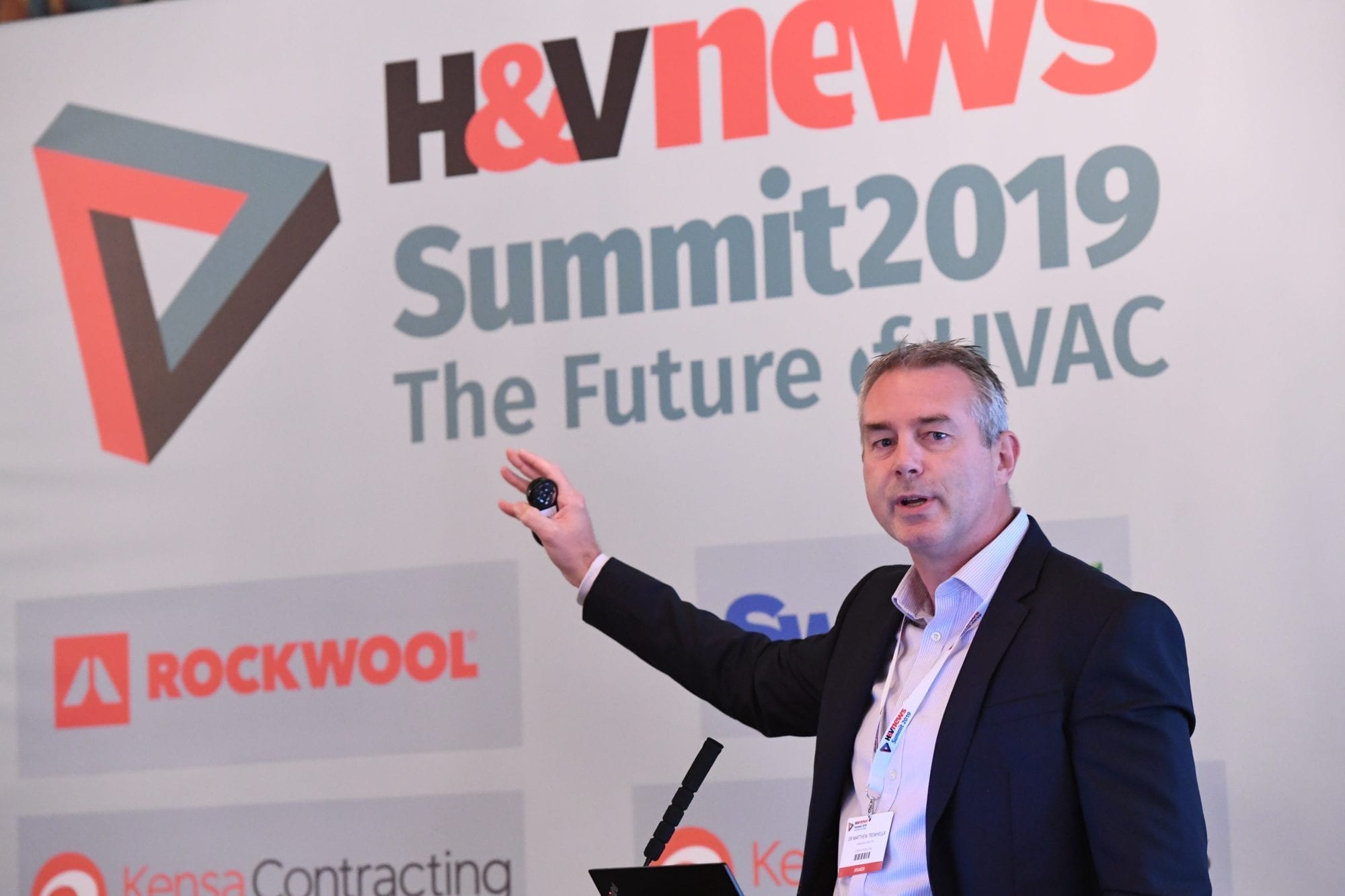In this exclusive interview with H&V News, Dr. Matthew Trewhella, Managing Director of Kensa Contracting, discusses heat pumps and the challenges posed by the need for national decarbonisation of how we heat our homes.
Kensa believe heat pumps will be a vital component to realising the government’s commitment to end fossil fuel heated homes by 2025. However despite political interest and expanding heat pump use, consumer adoption remains relatively small. Here Kensa and H&V News explore the need for decarbonisation, the challenges it poses, and the role of heat pumps in the future of HVAC.
Listen to the interview in this two-part podcast series:
How can the industry – and more specifically Kensa’s commitment to exclusively produce ground source heat pumps – realise heat pumps potential as a means to end a reliance on fossil fuel heating?
Mike Childs of Friends of the Earth eloquently stated at the Future of HVAC summit that heat pumps are going to play a major role in the future, but at the moment the current deployment levels are pitiful – and I think he has got this about right. We think we’re doing quite well, we’re growing year on year, we’re starting to do what we would consider large scale roll outs of many hundreds of heat pumps rather than ones and two’s, but compared to the heating industry as a whole we are still an absolute tiny scratch on the surface. To put some numbers on that the total deployment of air and ground source heat pumps in the UK each year is around 20,000 units compared to 1.6 million gas boilers per year.
Coming onto the future, there’s calls from various parts of the low carbon agenda to address this – the Committee on Climate Change are calling for around 3 million heat pumps to be deployed by 2030. That translates to around 300,000 per year, so you can see there’s going to be a huge scale up needed from the current 20,000 a year to 300,000 if we’re going to get anywhere near our carbon targets and anywhere near the ambition of the UK government on renewable heat. So, it’s a huge challenge ahead of us.
The difference between ground source and air source heat pumps
At Kensa we feel it’s important to make the distinction between ground source heat pumps and air source heat pumps as they’re very often wrongly lumped together. They have got a lot of similarities, they both have heat exchangers, compressors and expansion valves and they are both electrically powered, but actually the ultimate source of the energy really does matter. At Kensa we’ve resisted the temptation to boost our sales and turnover by manufacturing and selling air source heat pumps and have chosen to stick 100% to ground source. That’s where we see the future and where we see the biggest potential for whole scale decarbonisation.
The advantages of ground source over air source heat pumps
Although inside the box there are similarities, getting your heat from the ground offers a much more stable temperature; it stays the same temperature all year round. For example, the air temperature could be -5°C outside but you’re still going to get between 5°C and 10°C in the ground, so you still can get a good source of energy from that.
The huge advantage that a ground source heat pump has is that heat pump unit will sit in your house where it’s nice and warm and protected, typically in an airing cupboard, utility room or sometimes in a garage, but it’s indoors. An air source heat pump by its very nature has to access the air – that’s where it’s getting its energy from – and therefore the unit has to be outside. So from a lifetime point of view, you can typically expect somewhere between 50% and double the lifetime of a ground source heat pump unit compared to air source.
What are the challenges facing ground source heat pump adoption?
The achilles heel of ground source is obviously the cost of putting the ground array in, and sometimes the disruption involved. There is a slight trend within the market of fear of putting ground source in being worse than the reality; most of our clients when we initially talk about doing a ground source heat pump programme are really worried about how we are going to manage the drilling and how the noise and mess is going to disrupt the residents – there are challenges in this and you have to plan that work properly, but actually it is far more disruptive when you come into somebody’s house to change the heating system than it is drilling a hole outside in the street. So actually most of our internal planning is directed around the internal works rather than around the ground source – we certainly spend a lot more time on working out exactly how long we’re going to be in someone’s house, what shoes they’re going to wear, and how they’re going to protect the carpets, that sort of thing.
Borehole ground arrays
Typically a borehole takes one or two days to drill, and when you share boreholes between properties you can have anything between two and six properties sharing the same borehole. So in a street of properties, you’ll have a borehole every third garden and it only takes one to two days to complete. Therefore, you can move down the street extremely quickly with a drill rig with very small amount of disruption for a couple of days. After, it’s just reinstatement and then the place will be looking normal again. Whereas when you go inside someone’s home you have to be mindful of all their ornaments, carpets and everything else inside. Also, residents usually stay living in their home while works are going on.
We think ground source heat pumps have a better future ahead. The expensive part that we put money and effort into – the ground, typically a borehole for multiple unit projects – could cost something like £4,000 – £6,000 per property. But the thing to remember is that the borehole is there for over 100 years, so that’s only actually £40 to £60 per year of its working life. Yes it is a lot to ask somebody to buy 100 years’ worth of energy out of the ground up front but it is a good investment and it does make sense over the long-term.
How do you expect the market for air and ground source products to realistically change and evolve to meet the Future Homes Standard phase out of fossil fuels by 2025?
There’s a few aspects that need to be addressed: the perception of heat pumps, the cost of different fuels and the role that regulation has to play. The perception of heat pumps: quite a few people have heard about them now and it’s started to become mainstream to talk about heat pumps, but obviously given the numbers it’s still not totally mainstream to install them. Awareness is rising but there still isn’t a huge amount of people that have that direct experience of living with heat pumps that they can tell their friends about. It makes sense to move the low carbon agenda forward in the areas where it’s easiest first and those areas are anything that doesn’t have access to mains gas and new build properties.
How does the Future Homes Standard impact reliance on the gas network?
It’s now economically difficult to make a sensible argument to extend the gas grid to new homes for them to connect new boilers and new heating systems to the grid, when we know in 15 years that it’s probably likely that they will have to have an alternative. The difference in extra cost for heat pumps compared to gas boilers is much smaller in new builds than it is in retrofit so that’s definitely the place to start. That will have an effect of growing the industry and the skills but it will also have a huge effect on the number of people experiencing living with the technologies and that will help change the perception almost in one policy decision.
If we push that forward in new build and progressively move from 20,000 up to 100,000 heat pumps going in, bearing in mind around 200,000 new properties are being created each year, you can see you could go a long way towards the sort of numbers that the Committee on Climate Change are recommending the UK install between now and 2030 just with new build, and that will increase the customer perception, so that’s one huge benefit that can come forward.
There is a perception that the Renewable Heat Incentive (RHI)* is a middle-class subsidy, do you believe that could be a barrier to policy and heat pump support?
I wouldn’t necessarily 100% agree that the Renewable Heat Incentive* has been a middle-class subsidy. It has been in some circumstances. At Kensa we are taking a little bit of a different view with it as the vast majority of our work has been in social housing and the RHI* has made that possible.
Housing Associations and the RHI*
The social landlord essentially invests quite a large amount of money on the upfront infrastructure and putting the systems in, and they earn that back over 20-years through the RHI* because that is a non-domestic scheme that has worked well.
I’ve been in many social properties where saving £20 a week on their fuel bill has made a huge difference to their lives. For people quite often on just over £100 a week, a saving of £20 is absolutely vast. So at Kensa we’ve used the RHI* as a tool for decarbonisation but also with a fuel poverty agenda. We would like to see more of that going ahead, having the social value alongside the decarbonisation agenda. This is important to everyone at Kensa and I think that’s the right way for policy to move forward.
What is the future of the RHI?*
There is a route towards subsidy-free heat pumps but it’s going to take a while. It’s specifically going to take a while to bridge the gap between April 2021 when the RHI* is due to finish [31st March 2021], and 2025 when gas boilers are essentially likely to be banned in new builds [now confirmed]; there is certainly going to be a need for some subsidy in that area. There is also likely a need for some sort of subsidy onto 2035 when we start to decarbonise the gas grid itself. So I think it is unlikely to move to subsidy-free heat pumps in a very short term.
What is the role of industry in the future of heat pumps?
The industry itself does need to come up with some business models and we need to find institutions willing to invest on 100-year timescales and build out the ground source infrastructure in the same way as the national gas grid was built in the first place. That’s definitely something that needs to happen alongside subsidy policy.
We’ve worked hard in our social landlord work to move away from the 7-year Domestic RHI* subsidy to the 20-year Non-Domestic RHI* model – that was a reasonably big leap. We now have to evolve to 100-year in our thinking! As soon as you model on those timescales ground source really looks like a very sensible thing compared to pretty much any other kind of heating. If you look at the price of it on day one after it’s installed it looks quite expensive, but as soon as you put it on a 100 year time scale it looks really cheap.
*Please note, the RHI scheme has now closed – please visit this page to explore other funding.
How will you overcome the challenges of increased power generation that would be required to support the electrification of heat?
The issue has been complicated as a result of inaccurate 2014 analysis of peak energy demand for the electrification of heat in the UK. This suggested a required upscale of seven times more than the UK’s electricity generation capability in order to meet the needs of all domestic properties currently connected to the gas grid. A few things have happened since that has been published. Firstly in 2018 a study was re-done by different authors with 100 times more properties and a more of a sophisticated model; they came to the conclusion that actually four times the current electricity peak was needed, not seven. Already this is a little bit more manageable. Then when you factor in the efficiency of the heat pump – depending on the type of heat pump and what heat emitters you have in the property – it’s going to give you anything between two and a half and four and half times the amount of heat for the amount of electricity you use, so therefore the amount of extra generation you need to build in is only the same as we have now. So that’s starting to look a lot more manageable!
Grid balancing & load shifting
When you factor in the grid balancing with shifting the load from the peaks in the afternoon through to overnight and even mid-morning, then you can take quite a lot off that peak electricity demand again, and it’s probably only around 60% of the current electricity peak capacity we’d need to build again, for full electrification of the whole of the heating system, for every property in the UK. So that’s a big challenge, it’s still quite a lot of generation, it’s quite a lot of wind turbines and whatever your favourite electricity generating technology is, it is admittedly still quite a lot more, but it doesn’t seem an impossible task over the next fifteen years to do that.
How will the likely increased electricity demand for transport be factored into any future plans for heat pumps?
If we were in parallel to electrify transport completely that would require its own uplift in generating capacity and looking at the numbers probably a larger one than that for heat. The good thing about electrification of heat and transport at the same time is that they can both be part of the solution to the grid balancing. If most vehicles which are sat for 90% of the time doing nothing were plugged into the grid they can A) be charged when it’s most sensible and, B) actually even be recharged back to the grid at certain times.
So a smart centralised control of heat pumps and vehicle charging could dramatically reduce the amount of new electricity generating capacity that needs to be built. In fact it could even go quite a long way with just taking up the periods of over-capacity that we have now, that would actually take you quite a long way in both those directions. But going forward the amount of investment needed in new generation capacity would be way lower when you think of it all together, again that’s smart devices.
Smart cities
Kensa’s project in Oxford demonstrates a three-pronged approach. Alongside the 300 heat pumps that are being fitted there is the largest hybrid battery ever deployed to enable vehicle charging stations. Also there is a large 50 megawatt hour battery being connected to the grid, for balancing the grid directly and trading when electricity is cheap and selling back to the grid when it’s expensive. All of those three things are to be going to be modelled and run simultaneously. In that area it’s pretty clear to see that doing the three things at the same time is completely the sensible way of doing it.
The Oxford project is an Innovate UK funded project. It’s being led by a company called Pivot Power who are the grid battery specialists along with Oxford City Council, Oxford University, a company called Habitat who are writing software to optimise everything, and a company called redT who are trialling a flow battery, which is 48 megawatt hours of lithium and two megawatt hours of vanadium. The project will start to share data from September 2020.
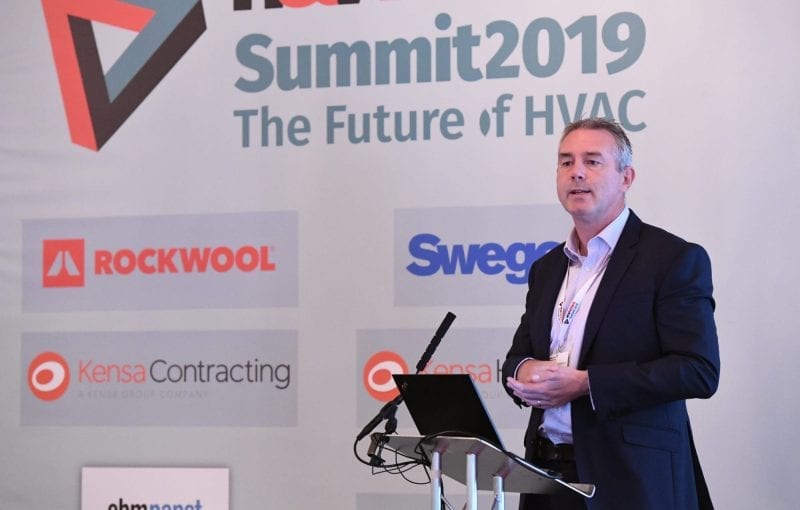

H&V News Summit - Future of HVAC | Matt Trewhella Pic 1
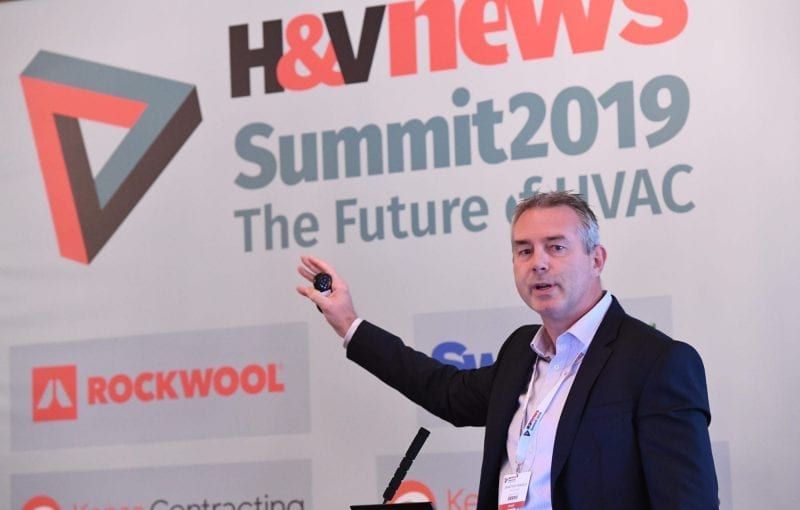

H&V News Summit - Future of HVAC | Matt Trewhella Pic 2
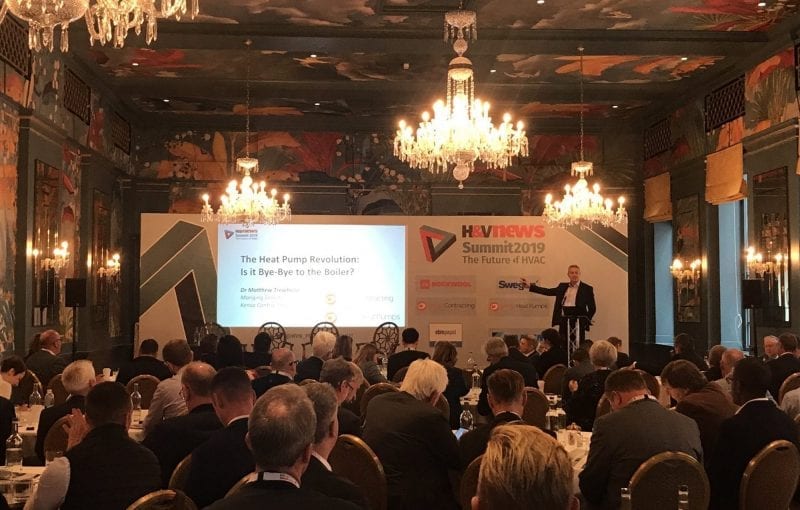

H&V News Summit - Future of HVAC | Dr Trewhella's talk
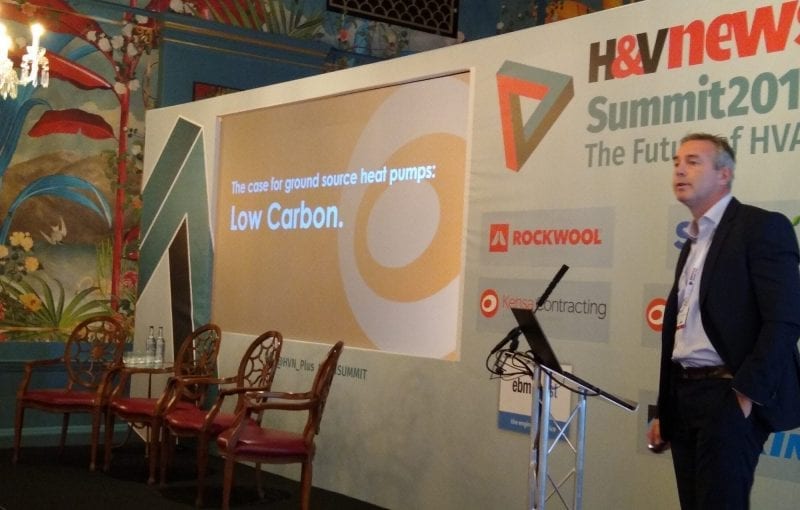

H&V News Summit - Future of HVAC | Low carbon
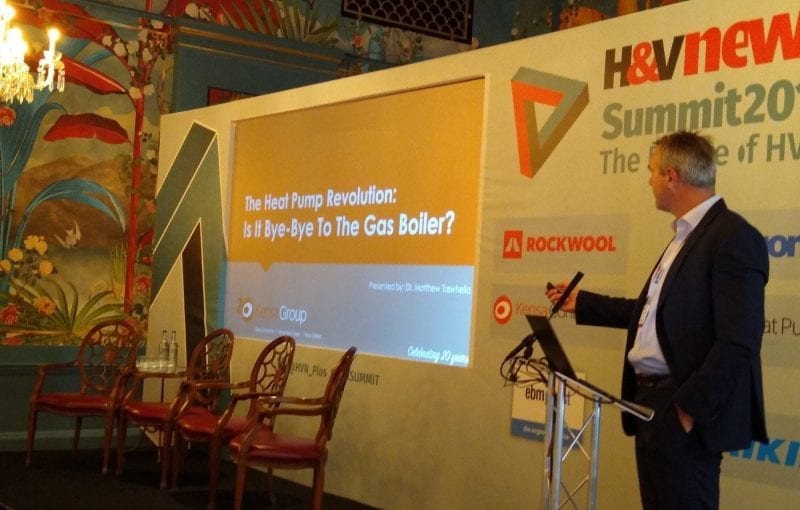

H&V News Summit - Future of HVAC | Is it bye-bye to gas boiler
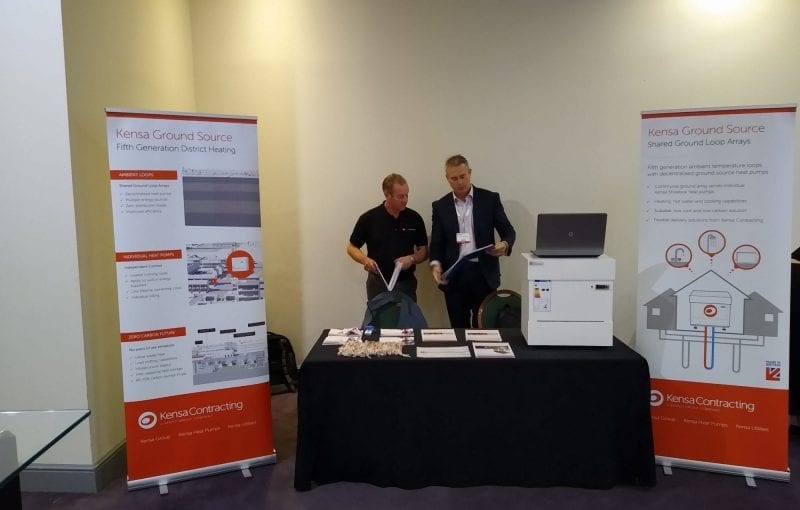

H&V News Summit - Future of HVAC | Stand set up


